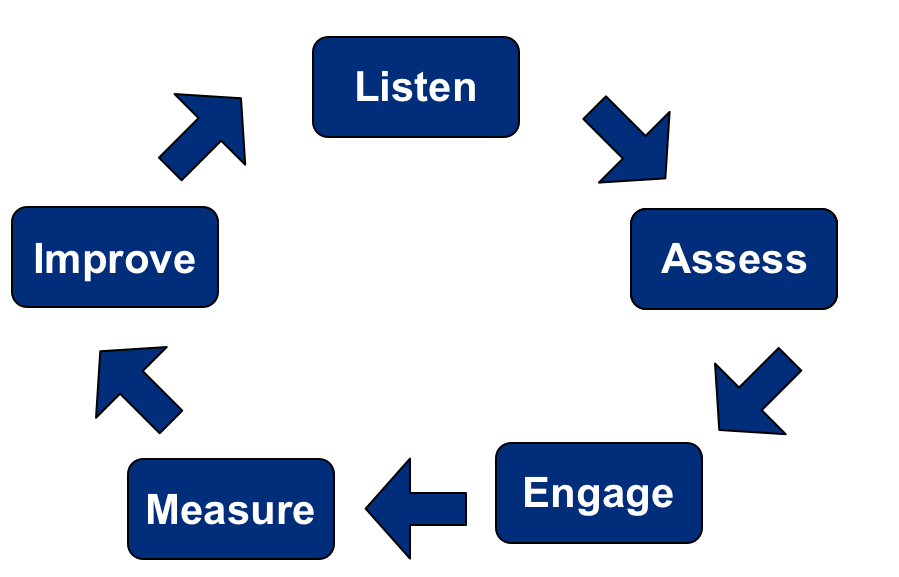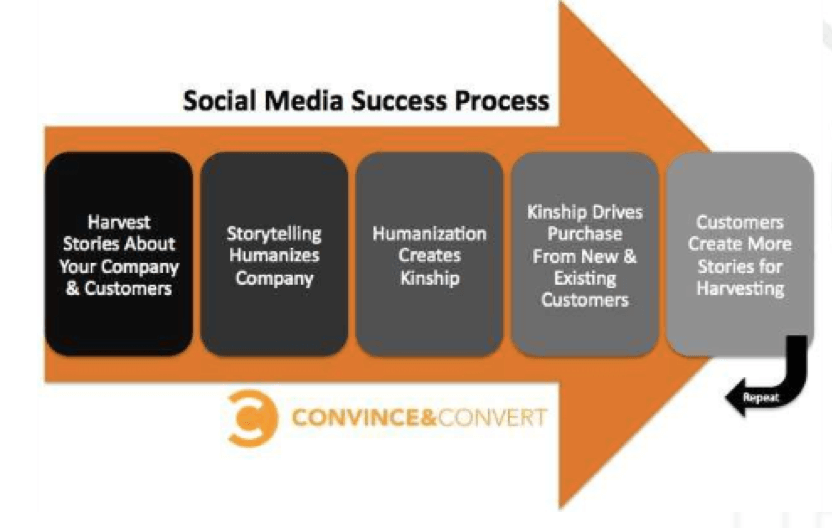 I had a different blog topic in mind today when I read Danny Brown’s, “Being Where YOU Need to Be, Not Where ‘They’ Say You Should.”
I had a different blog topic in mind today when I read Danny Brown’s, “Being Where YOU Need to Be, Not Where ‘They’ Say You Should.”
He relates a story of a small business owner who went to a conference and the social media expert who spoke advised attendees use all of the social media networks because “you never know where your customer is going to be, so you need to be in all of the places.”
This makes my blood boil. Clearly the speaker does not run a small business or have to make payroll or deal with HR issues or make rain or report to stakeholders. If he or she did, they would never advise this.
Play Where Your Customers Play
One of the things we do, when we begin work with clients, is put them through a five-step process. It’s also the process I use when teaching business leaders how to get started on the social web.
It’s not complicated. You start by listening, then move to assessing the conversations, then engage, then measure your results, then tweak and improve, and then you start all over again.
And, if you have time for only one thing, listening is the most important of the process. It’s the foundation for any communication program, not just for using the social web. It allows you to understand where your customers are participating online, the conversations they’re having, and what matters to them most.
Listen
The easiest way to listen is to use Google alerts.
It always surprises me how few people use this free tool from Google. You can set up alerts for your name, the company name, your competition, and the industry…at the very least. If you do those four things, you’ll receive four emails each day. In that email, it will outline where conversations about your search topics are happening online: The web, blogs, comments, discussion groups, social networks, videos, and books.
After a week or so you begin to see a trend. You’ll notice whether people are talking about your search topics on blogs or on the social networks. This begins to give you some intelligent information about which one platform you should use.
Of course, if you have the budget or receive more than 500-1,000 mentions per day (my Google alerts usually have no more than 10 each day), you’ll want to pay for a listening program. Tools such as Spiral16, Radian6, or Sysomos are the best.
Assess
Then you can begin to assess those conversations.
Let’s say, for argument’s sake, your Google alerts show you a lot of chatter is happening on Twitter. You note that in your brain as one of the tools to consider.
Now you can assess where the people you’re already connected with are participating online.
There are four tools you can use to do this:
- Fliptop. Fliptop is a tool that will let you upload email contacts from your computer, an email marketing platform, social media, or Salesforce. It will give you 100 free social profiles; anything beyond that is a paid option. It’s an easy way to test the software to see if it’s something you’d like to consider paying for and using. It returns demographics, title, company, all of the social platforms the person uses, and their Klout score.
- Qwerly. Qwerly is a little more sophisticated and should be used by someone who understands APIs and how to insert a key into your Web properties. This is a paid tool that takes the person’s name and location, and returns their bio, social networking profiles, usernames, and influence score (such as Klout).
- Gist. Gist is a tool you insert into your email server (such as Outlook or Gmail). Every time you email someone, it returns information such as their most recent blog post, what they’re reading, their shared photos, and their social networks.
- Xobni. Xobni is the Batman of email. When installed in your email server, it returns so much information it’s almost scary. It gives you the social platforms, just like the other tools, but it also shows you which attachments you’ve exchanged with that person, what time they’re typically on email and responding, how many emails they’ve sent you or haven’t responded to, and more.
Engage
So now you have Google alerts that show (for sake of this blog post) there is a lot of chatter about your company, brand, competition, or industry on Twitter.
Then you find, once you upload your contacts into Fliptop, that most of your existing contacts are participating on Twitter.
It probably makes sense for you to start with Twitter. Not to be on every platform, but based on your research, to start there.
But, of course, you have to have content to use on Twitter. Content that is housed on something you own: Your website and/or blog.
Jay Baer offers the best image I’ve seen on how to begin to engage online.
In the days of old, we would use written customer testimonials on our websites. Now you can take that same philosophy to create videos of your customers telling your company story. Those videos are uploaded to YouTube (which helps with your search) and embedded on your website and/or blog.
Then that link is used to build engagement through content on the one social network (Twitter in this case) where you’ve decided to participate.
Measure
Now it’s time to pay attention to whether or not your efforts are working. We use both Google analytics and Clicky at Arment Dietrich, but use InfusionSoft for Spin Sucks Pro and Hubspot for clients to generate leads, measure results, and figure out what’s working and what’s not.
You want to have a benchmark as you’re starting out. Your benchmark may be zero and you may be guessing at what you should measure (hint: It’s not web traffic) and that’s OK. Start somewhere, give it 75-90 days, and move to improve from there.
If you need help in setting up a measurement program, pick up Marketing in the Round. The last three chapters focus on how to do this.
Improve
And then you’re going to improve. You now know where your customers and prospects are participating. You’re creating stories and content that allow you to engage online. You’re measuring your results. And now you know where you need to improve.
We always recommend clients (and conference attendees) start by crawling, then walking, then running, and then flying.
There is no reason on earth you need to be everywhere at once or start with more than one thing.
Start small and grow.

